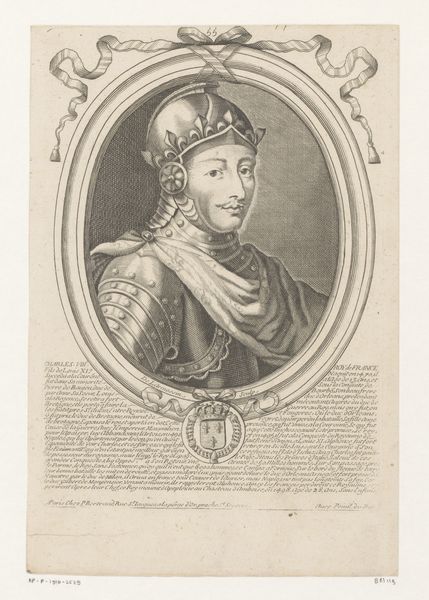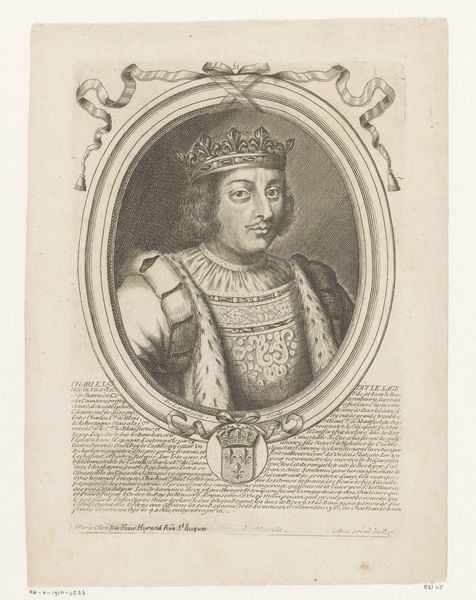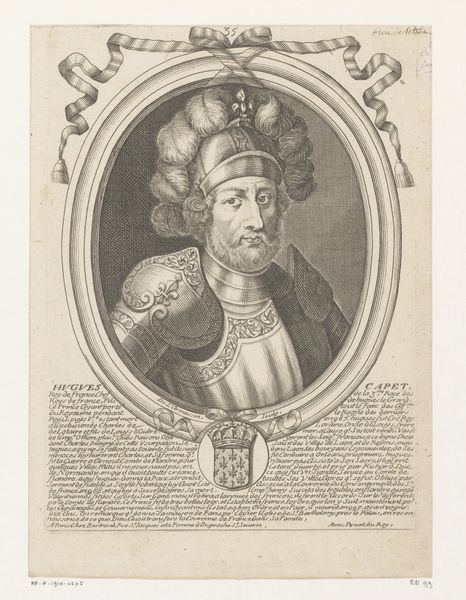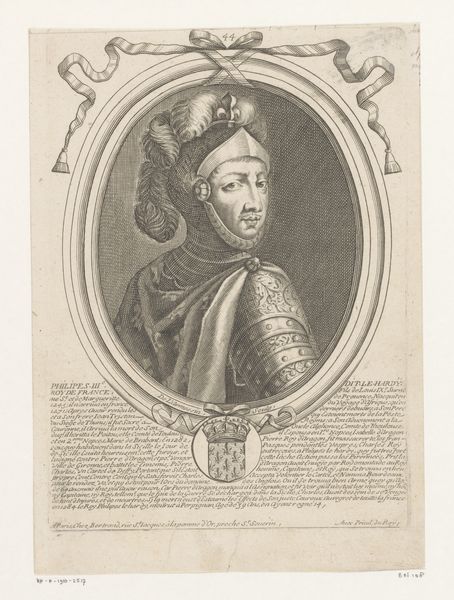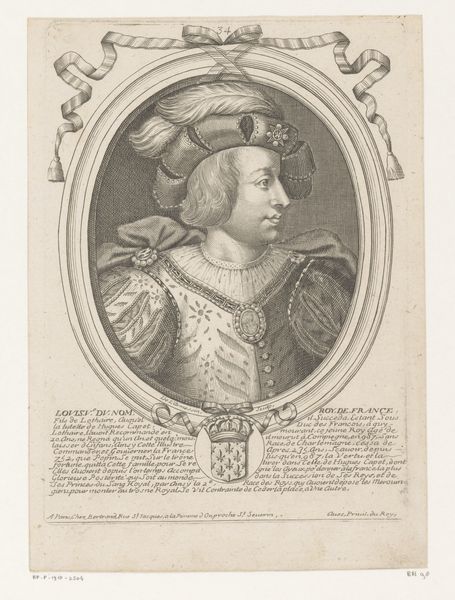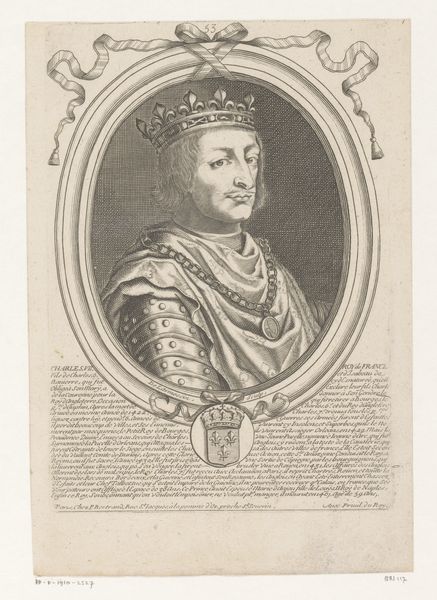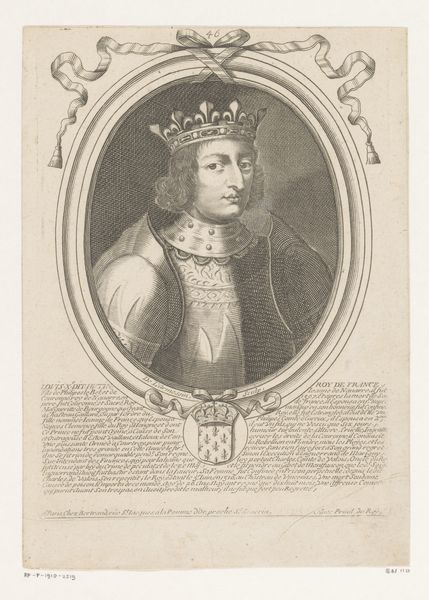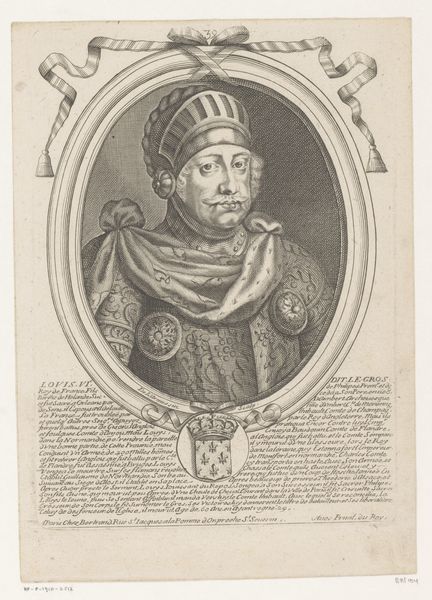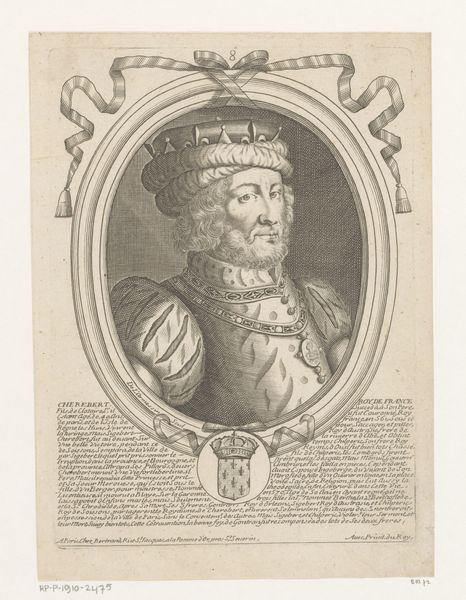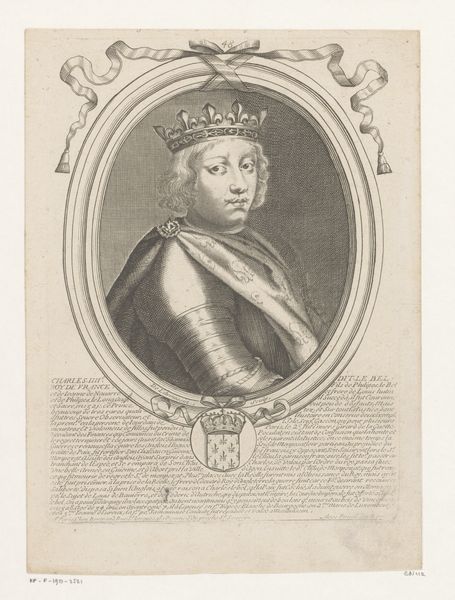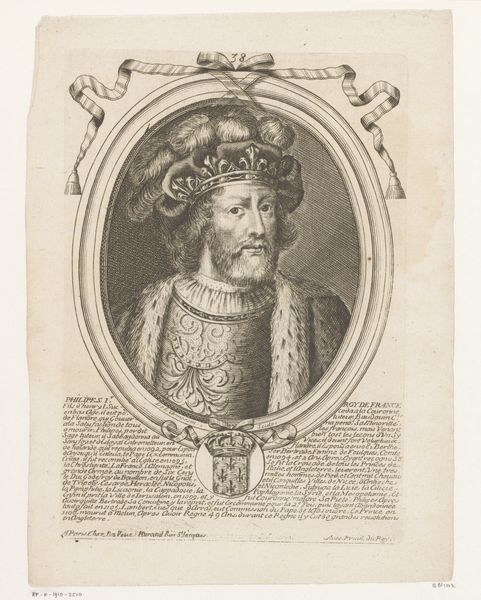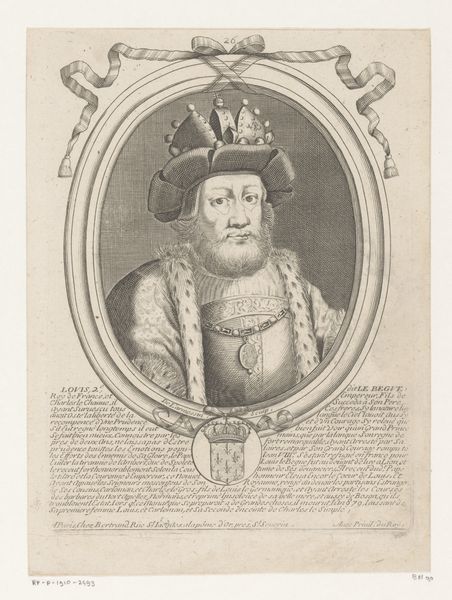
print, engraving
#
portrait
#
medieval
# print
#
old engraving style
#
history-painting
#
academic-art
#
engraving
Dimensions: height 238 mm, width 170 mm
Copyright: Rijks Museum: Open Domain
Here we see Nicolas de Larmessin’s portrait of Charles the Third, also known as Charles the Fat, rendered as an engraving. We can contextualize this portrait with the decline of the Carolingian Empire and the fragmented political landscape of 9th-century Europe. Charles the Fat, who briefly reunited the empire, was later deposed due to his perceived incompetence. Larmessin, working centuries later, presents Charles in a traditional, heroic mode: armored, crowned with laurels, an emblem of power and victory. But the image is also infused with a sense of melancholy. Charles's reign was marked by internal strife and external threats, capturing the fragility of leadership amid crisis. The portrait reflects the weight of his crown, and the isolation of power. In representing Charles this way, Larmessin offers a commentary on the nature of authority and the burdens of leadership.
Comments
No comments
Be the first to comment and join the conversation on the ultimate creative platform.

